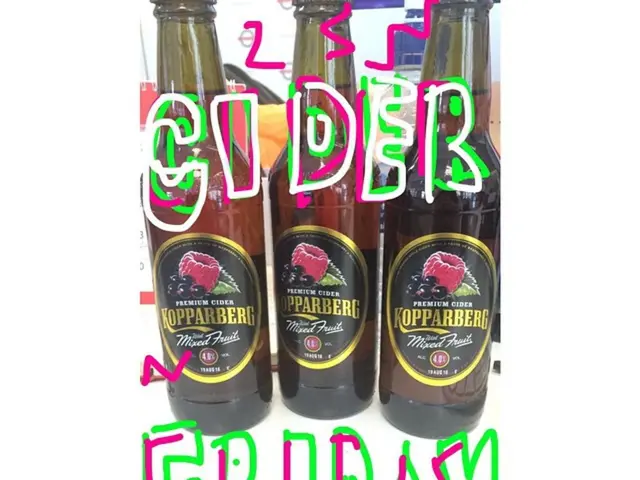The origins of America's reliance on corn syrup can be traced back to deception
The Rise of High Fructose Corn Syrup: A Tale of Science, Policy, and Global Events
The widespread adoption of high fructose corn syrup (HFCS) in America's food and beverage industry is a fascinating story that involves scientific innovation, agricultural policy, and geopolitical events.
1. Japan’s Fermentation Research Institute and Yoshiyuki Takasaki’s Discovery:
In the 1960s, Japanese scientists at the Fermentation Research Institute made a groundbreaking discovery. They developed an enzymatic process to convert corn starch into fructose from glucose using a glucose isomerase enzyme. This technological breakthrough, led by chemist Yoshiyuki Takasaki, made it possible to produce HFCS efficiently and at scale, offering a sweetener alternative to cane and beet sugar.
2. Secretary of Agriculture Earl "Rusty" Butz and U.S. Agricultural Policy:
During the late 1960s and early 1970s, Earl Butz served as U.S. Secretary of Agriculture and aggressively promoted agricultural industrialization and large-scale corn production. His policy encouraged farmers to plant "from fence row to fence row," leading to significant surpluses of corn grain in the U.S. The abundant, cheap corn made HFCS an economically attractive sweetener option compared to increasingly expensive sugar imports.
3. Soviet Invasion of Afghanistan and Sugar Prices:
The Soviet invasion of Afghanistan in 1979 triggered global geopolitical tensions that affected commodity markets, including sugar. During this period, sugar prices surged due to supply uncertainties and trade disruptions. The spike made sugar—a key sweetener in food and beverage industries—much more expensive, incentivizing American manufacturers to seek cost-effective alternatives like HFCS derived from abundant U.S. corn.
How These Factors Worked Together:
- Scientific Innovation (Takasaki & Fermentation Research Institute): Development of the enzymatic process to produce HFCS inexpensively and efficiently.
- Agricultural Policy (Earl Butz): Major increase in U.S. corn production created cheap raw materials for HFCS.
- Geopolitical/Economic Shock (Soviet Invasion): Sugar price surges pushed manufacturers toward alternative sweeteners to control costs.
Together, these elements created ideal technical, economic, and political conditions that allowed HFCS to become widely adopted in the American food and beverage industry, particularly in soft drinks and processed foods, from the late 1970s onward.
Some interesting additional details:
- In 1974, a surge in sugar prices led to a glut of corn, prompting Dwayne Andreas to build facilities for converting surplus corn into high fructose syrup.
- High fructose corn syrup was not a common sweetener before the 1970s.
- Consumption of high fructose corn syrup has declined modestly since 2005.
- In 1981, Dwayne Andreas orchestrated the passage of federal legislation that restricted sugar imports, guaranteeing higher sugar prices in the United States.
- High fructose corn syrup is a sweetener that Health Secretary Robert F. Kennedy, Jr. has vowed to ban.
- The widespread adoption of high fructose corn syrup is connected to historical events involving Japan's Fermentation Research Institute, Secretary of Agriculture Earl "Rusty" Butz, and the Soviet invasion of Afghanistan.
- Paul Smucker, CEO of JM Smucker Co., adopted high fructose corn syrup in 1976, calling it a better flavor enhancer than cane sugar.
- The Soviet grain embargo in 1979 caused corn prices to drop, making high fructose corn syrup a cheaper alternative, leading Coca-Cola Co. to replace some of its cane sugar with the new sweetener in 1980.
- Science and Industry Collaboration: Following Yoshiyuki Takasaki's breakthrough, the food and beverage industry began utilizing HFCS produced by the Fermentation Research Institute, marking a significant shift in sweetener usage.
- Finance and Business Opportunities: With rising sugar prices, Dwayne Andreas saw potential in converting corn into HFCS for cost advantages. This led to the construction of facilities and the expansion of HFCS availability.
- Lifestyle and Food Trends: In response to customers' changing preferences, Paul Smucker, CEO of JM Smucker Co., adopted HFCS in 1976, coveting it as a superior flavor enhancer compared to cane sugar.
- Health and Nutrition Concerns: In recent years, HFCS consumption has shown a modest decrease, reflecting growing public awareness of its health implications, as advocated by figures such as Health Secretary Robert F. Kennedy, Jr.
- Policy and Regulation: The Soviet grain embargo in 1979 lowered corn prices, making HFCS a more affordable option. Dwayne Andreas orchestrated legislation in 1981 that restricted sugar imports, further strengthening HFCS's position in the American market.
- Impact on the Health-and-Wellness and Fitness-and-Exercise Industries: The rise of HFCS in the food and beverage industry sparked public debates regarding its impact on overall health, prompting increased interest in personal wellness, fitness, and nutritious food-and-drink alternatives.




